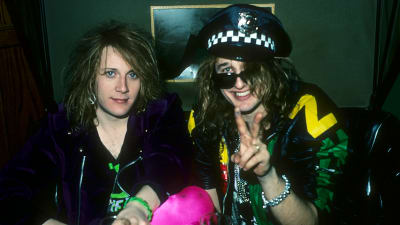
Gaël Monfils’ announcement of his retirement wasn’t entirely shocking to the tennis world. At 39, the Frenchman has already outlasted many of his peers. Instead, there was a quieter kind of reflection, a recognition that tennis will soon lose one of its most distinctive characters. Many fans will not be thinking of rankings or titles, but the sliding forehands on Parisian clay, the impossible leaps at the US Open, and the way he turned stadiums into theatres.
Monfils’ career began with expectations of greatness. After sweeping three junior Grand Slam titles in 2004, he entered the main tour as the ATP Newcomer of the Year in 2005. He has reached at least one singles final on the ATP Tour every year for 19 consecutive seasons from 2005 to 2023, making him one of only five players in the Open Era to achieve this for 19 or more seasons. Additionally, he ranks eighth among active players with more than 550 career wins.
In between, there were 13 ATP titles, countless deep runs, alongside a career-high ranking of world No. #6.
But the numbers don’t capture the experience of watching Monfils play. Under the lights, whether in Melbourne or New York, he often turned defence into spectacle, sprinting corner to corner before flicking a winner with a grin.
At Roland-Garros, his favorite venue, he had a knack for lifting the crowd with a sliding pass or a cheeky gesture between points. Fans never quite knew what to expect, and that unpredictability became his trademark.
There were frustrations. His flashy style sometimes came at the cost of consistency. Injuries interrupted his rhythm, and he never managed to break through to a Grand Slam final. Yet, even in those gaps, Monfils remained one of the sport’s most beloved figures. He didn’t just compete; he connected.
Part of his appeal was personal. Whether in candid interviews or lighthearted exchanges with fans, Monfils carried himself with an openness that made him accessible.
His marriage to fellow pro Elina Svitolina and their young family gave supporters another glimpse into the human side of a man often described as tennis’s ultimate showman.
Now, as he prepares for a farewell tour in 2026, his legacy looks clearer. He may not stand alongside Rafael Nadal, Novak Djokovic, or Roger Federer in the record books, but he doesn’t need to. Monfils gave the sport something harder to quantify: joy. For two decades, he reminded the tennis world that the sport is not only about who wins, but about how it makes people feel.
In arguably the most memorable week of his illustrious career, he defeated Andy Murray and then Roger Federer to reach the final of the 2010 Paris Masters. Under the Parisian lights, Monfils chased down ball after ball, collapsing into splits, laughing with the crowd, then springing back up to snatch points that seemed lost. He won those matches in front of a roaring home audience, not because he was flawless, but because he made them believe in him and made them part of the performance.
When he steps off the court for the final time next year, Monfils will leave behind more than highlight reels. He will leave the memory of nights like that one, where sport felt like theatre, the crowd was part of the story, and tennis, for a moment, was just pure joy.
More must-reads:
- Dylan Raiola and other big-name QBs to know in the transfer portal
- Buffalo Sabres' GM change isn't about rebuilding
- The 'Last 10-TD season by NFL team' quiz
Breaking News
Trending News
Customize Your Newsletter
 +
+
Get the latest news and rumors, customized to your favorite sports and teams. Emailed daily. Always free!








